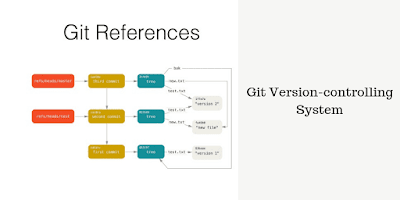How Is Ansible Better Than Other Configuration Management Tools?
Although
there are many configuration tools available in the market but ansible has
created its own popularity in this field. Ansible is one of the most popular
Configuration management tools that is growing popularity day by day in the
field of automation and Orchestration tools
Let’s
understand why ansible has grown popular so rapidly in its Field:
How Is Ansible
Better Than Other Configuration Management Tools?

Efficient and powerful Architecture
The
working of ansible is done by connecting to our nodes and pushing out small
“Ansible modules” to them. The Ansible then executes these created
modules (over SSH by default) and removes these modules when finished.
Your
library of modules can reside on any machine that you desire, and there is no
requirement of servers, daemons, or databases. Typically you’ll be able to work
with your favorite terminal program, a text editor, and probably a version
control system to keep the track of changes to your content.
Powerful SSH authentication
Passwords
are also supported, but SSH keys with ssh-agent are the best ways in order to
use Ansible. You can also use Kerberos. Lots of options! Root logins are not
required, you can login as any of the existing users, and then can use su or
sudo to any user.
The
“authorized_key” module of ansible is a great way to use Ansible to control
which machines can access which hosts. Other options, like Kerberos and
identity management systems, can also be used for the authentication.
Easy management of Inventory Files
Ansible,
by default, represents what machines it manages using a very simple INI file
that keeps all of your managed machines in groups that you want to choose…
In
order to add new machines, there is no additional SSL signing server involved,
thus there’s never any hassle deciding about why a particular machine didn’t
get linked up due to obscure NTP or DNS issues.
Ansible
can also a plugin to other external infrastructures, such as drawing inventory,
group, and variable information from sources like EC2, Rackspace, OpenStack,
and more in a very easy way.
Easy and Powerful Playbooks
Playbooks
can finely orchestrate multiple modules of your infrastructure, with very
detailed and easy control over how many machines to tackle at a time.
This is where the working on Ansible starts to get most interesting.
The
ansible playbooks are the easy and the powerful way to run various modules of
any infrastructure or configuration management. The playbooks are the
interesting parts of the whole ansible learning that makes the user to very
easily configure its requirements just by writing a very few commands and a
very simple and easily understandable script in the YAML format.
Secure
Ansible
does not deploy agents to nodes. OpenSSH and Python are the only requirements on the managed nodes. Ansible is a
clientless configuration management system that is, it does not require ansible
to be installed in the node machines also. The ansible just needs to be
installed in the client machine.
Highly reliable
Once
carefully written, an Ansible playbook can be can never be changed, to
prevent the unexpected side-effects on the managed systems. It should be noted,
however, that it is entirely possible to have a poorly written playbook that is
not idempotent when the playbooks have not been planned or created efficiently.



Comments
Post a Comment